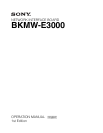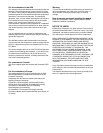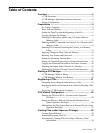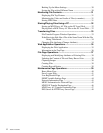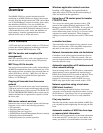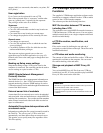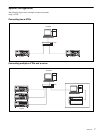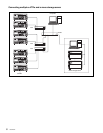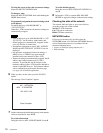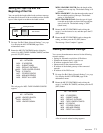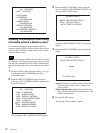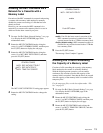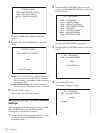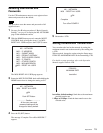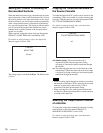
5
Overview
Overview
The BKMW-E3000 is a network interface board for
installation in an MSW-2000 series digital videocassette
recorder. With this board installed, the VTR can be added
to a 10/100/1000Base-T network to transfer video, audio,
and metadata as MXF files. You can use MXF data
received over the network to record video, audio, and
metadata to cassettes. MXF (Material Exchange Format) is
a file format that stores video, audio, and metadata in a
single package. It enables communications between
network devices such as VTRs and servers.
e-VTR Functions
A VTR with this board installed (called an e-VTR below)
provides the following functions in addition to functions
provided by standard MSW-2000 series VTR.
MXF file transfer and reception (file
management)
MXF files containing video, audio, and metadata can be
sent and received over a network (using FTP protocol).
MXF Proxy AV file transfer
You can store low-resolution video, audio, and metadata as
an MXF file and handle the file at a low transfer rate. Files
that contain such low-resolution video and audio data are
called “MXF Proxy AV files.” MXF Proxy AV files are
played back using the supplied Windows application
software e-VTR Manager.
Copying of timecode from the source
material
Timecode (LTC) from the source tape in the transmitting
VTR can be copied as is to the cassette tape in the receiving
VTR. The Setup menu of the receiving VTR (ITEM-252:
TCG NETWORK REGEN MODE) can be used to specify
whether the timecode is regenerated or copied as is from
the source tape.
Web server network services
Internet browsers such as Internet Explorer and Netscape
Navigator can be used for the following operations:
• File operations
• Displaying the hours meter
• Displaying the error logger list
• SNMP (Simple Network Management Protocol) settings
• Displaying network information
• Displaying menus for network operations
Windows application network services
Installing e-VTR Manager, the supplied Windows
application, allows FTP file transfer and monitoring of
video and audio from the application.
Using the e-VTR control panel to transfer
FTP/HTTP files
You can use the control panel operation of the e-VTR
instead of the supplied Windows application e-VTR
Manager to transfer FTP or HTTP files. If you specify IN
and OUT points in advance, you can then transfer the
section between the points as a file. Up to 5 servers can be
registered as transfer destinations. These destination
settings are saved even after the power to the VTR is turned
off.
e-monitor functions
Video and audio can be monitored on a computer screen.
Video is sent from the e-VTR using JPEG compression,
and audio is sent using A-Law compression.
Network transmission data rate limitations
Limitations can be placed on data transmission rates for
transmissions from the e-VTR to the network. This can
prevent congestion and severe degradation in performance
when the network is busy.
Automatic acquisition of IP addresses and
other network settings
Network settings for the e-VTR (IP address, subnet mask,
default gateway) can be automatically acquired from a
DHCP server when the VTR is turned on and the VTR set
according to the information. In order to utilize this
function, it is necessary to install a DHCP server or a
DHCP relay agent on the same network as the e-VTR.
Network operation using a host name
(DNS client function)
When connecting with external devices via network,
operations can be achieved using the host names as well as
the IP addresses. Specifying a server to be connected by
its host name pemits the server to be easily identified.
File jump function
When the tape already contains data defined as MXF files,
you can jump between neighboring files and play the files
back.
Automatic creation of MXF files from tape
or memory label information
MXF files can be automatically created from information
in the timecode (LTC) on the tape (rec start marks, shot
marks, post marks) or from information recorded on the



